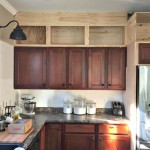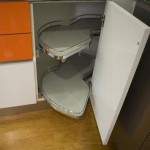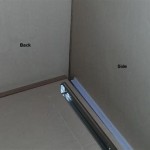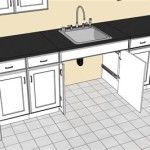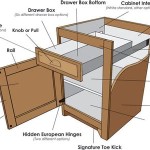Faux Finish Techniques for Kitchen Cabinets
Faux finishes, also known as decorative painting techniques, involve creating the illusion of a different material or texture using paint. In the kitchen, faux finishes on cabinets can add depth, visual interest, and a touch of elegance. They offer a visually appealing and cost-effective alternative to expensive materials like real wood, stone, or metal. This article explores several popular faux finish techniques that can transform your kitchen cabinets.
Glazing
Glazing is a technique that involves applying a translucent layer of glaze over a base coat of paint. The glaze creates depth and dimension, enhancing the natural grain of the wood or creating a subtle, aged look. Glazes come in various sheens, from matte to gloss, allowing you to adjust the level of shine desired. Glazing can be applied with a brush, sponge, or rag, and the technique allows for artistic expression as you can manipulate the glaze to create unique patterns and effects.
To achieve a glazed finish, first, prepare the cabinet surface by sanding and cleaning it thoroughly. Apply a base coat of paint in your desired color. Once the base coat is dry, apply a glaze in a thin layer using a brush or sponge. Blend the glaze gently, creating a soft transition between the glaze and the base coat. You can use a rag to wipe away excess glaze for a more subtle effect. Experiment with different glaze colors and application techniques to achieve the look you desire.
Color Washing
Color washing, also known as "water glazing," involves diluting paint with water or a glaze medium, creating a translucent wash. This technique creates a soft, subtle effect that resembles the look of weathered wood or aged paint. Color washing is a versatile technique that can be used to create a variety of effects, from subtle highlights to dramatic washes. It can be applied to both painted and stained cabinets.
To color wash, first, prepare the cabinet surface as you would for any other painting project. Then, mix your base paint color with a glaze medium or water to achieve the desired level of translucency. Apply the wash using a brush, sponge, or rag, working in light, even strokes. Allow the wash to dry partially before applying a second coat if desired. You can create interesting patterns and textures by varying the pressure and direction of your brushstrokes.
Rag Rolling
Rag rolling is a textured faux finish technique that involves using a crumpled rag or sponge to create a random, uneven pattern. This technique is commonly used to mimic the appearance of stone, brick, or wood grain. It can add depth and dimension to your kitchen cabinets and create a rustic or antique look.
To achieve a rag-rolled finish, begin by applying a base coat of paint in your desired color. Once the base coat is dry, apply a second coat of paint in a contrasting color using a brush or roller. While the second coat is still wet, use a crumpled rag or sponge to gently roll over the surface, creating an uneven, textured pattern. Experiment with different colors, ragging techniques, and even the texture of your rag to create a unique and visually appealing finish.
Other Techniques
Beyond these popular techniques, various other faux finish methods exist, including:
- Sponging: This technique uses a sponge to create blotchy, textured patterns, giving the cabinets a rustic or aged appearance.
- Stippling: Using a stippling brush or sponge, create small dots on the surface, mimicking the look of coarse texture or even a metallic finish.
- Dragging: A simple technique where you pull a damp brush or rag through wet paint, creating streaks and lines for a distressed or aged appearance.
- Marbleizing: A more complex technique that uses a combination of colors and techniques to create the look of marble.
- Metallic Finishes: Achieve a sophisticated and modern look by applying metallic paints, often with a clear glaze, to the cabinets for a lustrous finish.
No matter which technique you choose, it's crucial to practice on a scrap piece of wood or plywood beforehand to ensure you are comfortable with the application. You can also find numerous online resources and tutorials for detailed instructions and visual guides. Faux finishes offer a unique and personal way to enhance your kitchen cabinets while expressing your individual style.

Faux Painting Techniques For Kitchens Pictures Ideas

Faux Painting Kitchen Surfaces Walls Cabinets Floors Countertops

Faux Painting Kitchen Surfaces Walls Cabinets Floors Countertops

Faux Painting Kitchen Surfaces Walls Cabinets Floors Countertops

Tips For How To Apply Faux Finish Furniture Masters Studio

Rag Painted Faux Finish Techniques Ideas And Examples

Faux Painting Kitchen Surfaces Walls Cabinets Floors Countertops

7 Expert Tips For Flawless Kitchen Cabinet Painting

Antique Faux Finishes Cabinet Boy A Builder Company

How To Paint Kitchen Cabinets Like The Pros
Related Posts

